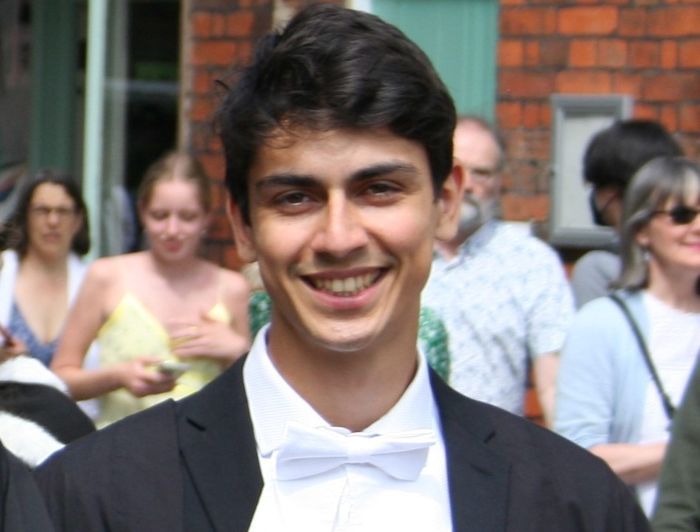Charting the Scientific Landmarks of Cambridge
Suchir Salhan and Esmé Kenney break down the historic Scientific landmarks across Cambridge
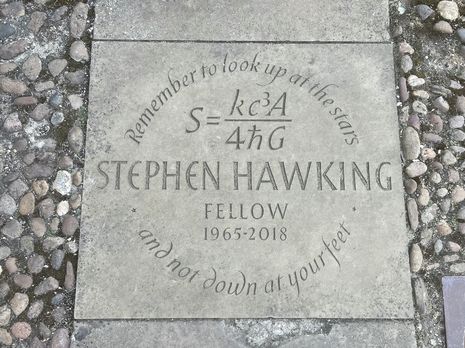
Cambridge is a hotbed for scientific innovation. And with that comes a plethora of scientific artefacts found within colleges and across the city – some of which you may pass blissfully unaware. Varsity breaks down our top picks for the best scientific landmarks in Cambridge.
Gonville & Caius: Stephen Hawking, Francis Crick and John Venn
Caius Old Courts have a number of commemorative scientific artefacts. In Caius Court, a memorial is laid outside the office of the late scientist Stephen Hawking in Caius Court. Engraved in the flagstone by the Gate of Honour are the words: "Remember to look up at the stars and not down at your feet", alongside Hawking’s famous equation of the entropy of a black hole.
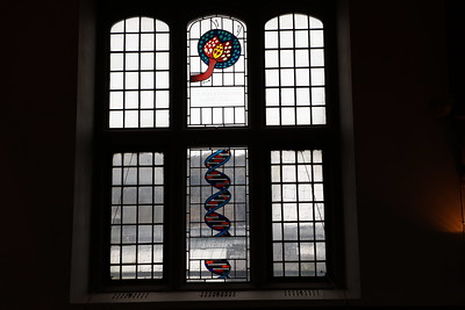
In Hall are a series of commemorative stained glass windows of eminent Caian scientists – although “there is no shortage of candidates, for the college has more Nobel Laureates than spare windows.” This includes a Venn diagram commemorating the mathematician John Venn. Physicist James Chadwick’s window shows an alpha particle bombarding a beryllium atom – commemorating his discovery of the neutron. Nobel Prize-winning physiologist Sir Charles Sherrington and a depiction of Green’s Theorem in vector calculus (named after Caian mathematician George Green).
Francis Crick “gave his blessing” to his window showing the Watson–Crick DNA double helix on condition that Watson agreed. The window is not supposed to be not visible from outside at night when the DNA would be coiling the wrong way.
The Eagle: DNA discovery
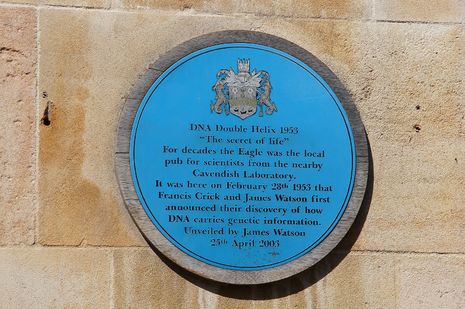
The historic pub is where Crick first announced they had discovered the structure of DNA. In February 1953, a jubilant Francis Crick walked into The Eagle in Cambridge to interrupt a patron’s lunchtime to proclaim that he and James Watson had “found the secret of life”. This is commemorated by a blue plaque next to the entrance, and also by two plaques in the middle room by the table Crick and Watson used to eat at regularly and worked to draw up a list of 20 canonical amino acids.
Christ's: The Darwin Garden
Among the many posthumous commemorations of Darwin is a portrayal of him in stained glass in his alma mater Christ's College. It is in the oriel window of the Hall at his alma mater, Christ’s College Cambridge – in a bay looking onto the First Court of the College. From Cambridge, Darwin embarked on a ground-breaking journey of discovery on HMS Beagle and fifty years after his birth, his seminal work The Origin of the Species was published. In New Court, the Darwin Garden was created to commemorate his legacy, planted with a selection of plants that Darwin would have encountered on his botanical voyages on the ship HMS Beagle. It features a statue of Darwin as a young man, sculpted by Anthony Smith.
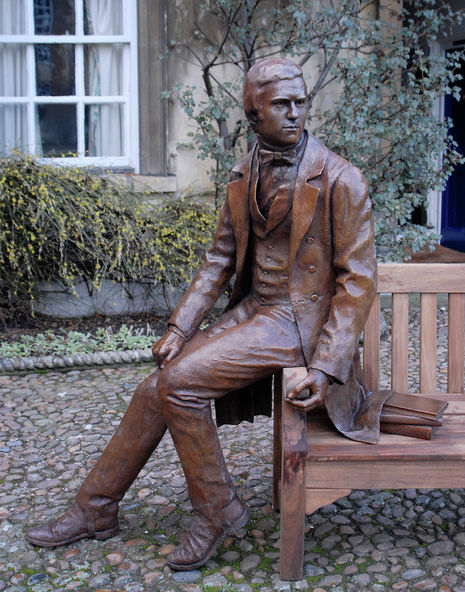
Trinity: The apple tree and early naturalist
The clone of Newton’s apple tree on the green outside Trinity College Cambridge is believed to have grown from a graft from the original tree which inspired Sir Isaac Newton to formulate his theory of gravity in the 17th century.
The Wren Library, in Nevile’s Court, has a number of valuable manuscripts, including Newton’s first edition copy of Philosophiae Naturalis Principia Mathematica and mathematician Ramujan’s 'lost notebook'. It features busts of Newton, philosopher Francis Bacon who led the advancement of both natural philosophy and the scientific revolution, ornithologist and early student of linguistics Francis Willughby, naturalist John Ray, mathematician Isaac Barrow (known for proving the fundamental theorem of calculus).
The library also features a painted glass window depicting Newton, in blue robes, being presented to King George III by Fame or the muse of the College, in yellow robes. The figure of Britannia stands behind the King with Francis Bacon, in black, seated with paper and pen as if to record the occasion at the bottom right. At the top two cherubs and a bare-breasted woman herald this event with a trumpet.
Queens: Mathematical Bridge
The Mathematical Bridge, connecting the older “dark side” to the newer “light side” of the college across the River Cam, is believed by popular fable to have been designed and built by Newton without the nuts or bolts. Varsity can put this rumour to bed: the bridge was, in fact, built in 1749 after Newton had died.
Murray Edwards and UL: The discovery of pulsars
On 28th November 1967, Dame Jocelyn Bell Burnell, then a postgraduate student at Murray Edwards College, was looking for quasars at the Mullard Radio Astronomy Observatory just outside Cambridge. Whilst analysing data recorded from the radio telescope three months earlier, she discovered the first pulsar. These are magnetised rotating neutron stars that emit ‘pulses’ of radiation at highly regular intervals (between seconds and milliseconds), formed when supergiant stars explode into a supernova.
Although the discovery of pulsars won a Nobel Prize in 1974, the award was given to two male scientists, not Bell Burnell. The Chart where Bell Burnell first found evidence of a pulsar is kept in the UL.
This is only a selection of the many historical artefacts of Cambridge’s rich scientific tradition. Colleges continue to memorialize famous scientists – with King’s College hoping to erect a sculpture of mathematician Alan Turing.
 Interviews / You don’t need to peak at Cambridge, says Robin Harding31 December 2025
Interviews / You don’t need to peak at Cambridge, says Robin Harding31 December 2025 Comment / What happened to men at Cambridge?31 December 2025
Comment / What happened to men at Cambridge?31 December 2025 News / Unions protest handling of redundancies at Epidemiology Unit30 December 2025
News / Unions protest handling of redundancies at Epidemiology Unit30 December 2025 Features / ‘Treated like we’re incompetent’: ents officers on college micromanagement30 December 2025
Features / ‘Treated like we’re incompetent’: ents officers on college micromanagement30 December 2025 News / Varsity’s biggest stories of 202531 December 2025
News / Varsity’s biggest stories of 202531 December 2025

